News & Articles
The Strategic Leadership Style Model
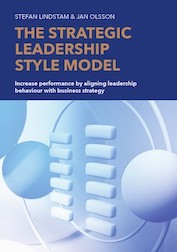 Now you can order the book “The Strategic Leadership Style Model – Increase performance by aligning leadership behaviour with business strategy”. The book serves as a guide for you as a user of LSI Leadership Style Inventory, but also as material to distribute to participants in leadership development, both within teams and individually.
Now you can order the book “The Strategic Leadership Style Model – Increase performance by aligning leadership behaviour with business strategy”. The book serves as a guide for you as a user of LSI Leadership Style Inventory, but also as material to distribute to participants in leadership development, both within teams and individually.
Current thought and contemporary guidance about leadership are often grounded in short-lived trends and value judgments about what constitutes “good” leadership. Lindstam and Olsson offer an alternative. They show how managers can improve organisational performance by aligning leadership goals with their organisation’s dynamic opportunities and challenges.
Ideal for professionals in leadership development or executive recruitment, as well as managers looking for fresh perspectives, this book aims to build a bridge between business strategy and leadership behavior.
You can order the book The Strategic Leadership Style Model – Increase performance by aligning leadership behaviour with business strategy on amazon.de
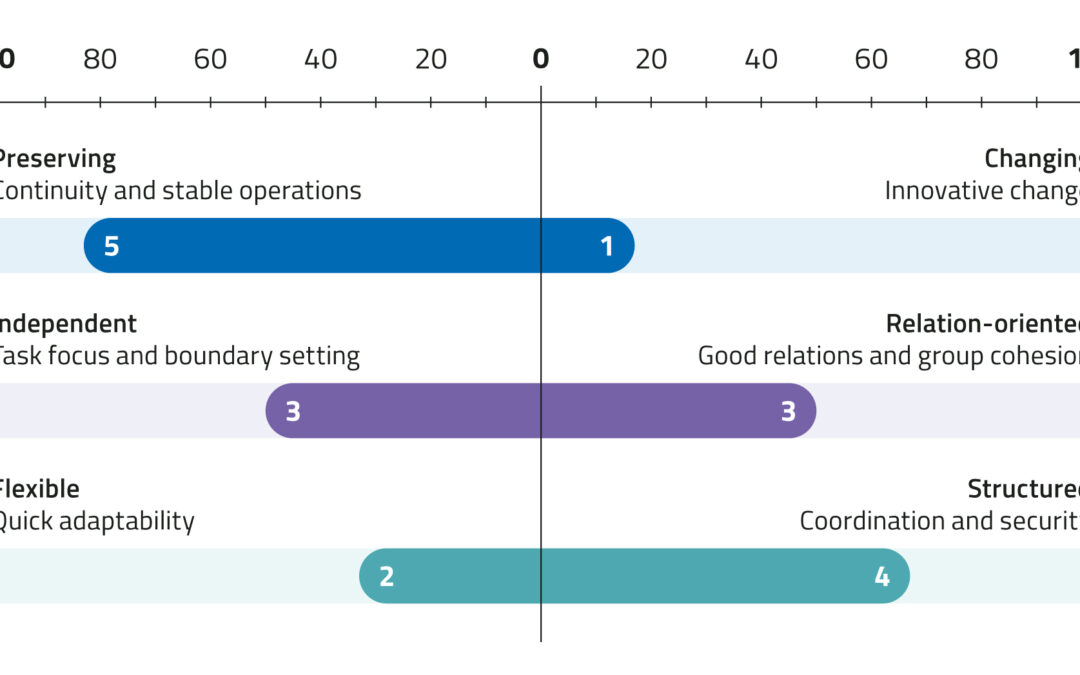
Team report for LSI
The LSI Leadership Style Inventory team report is now available.
To perform effectively, management teams need to answer questions such as: What leadership objectives are the most important for our organisation to survive and flourish? What kind of leadership would help us successfully reach our goals? How can we change to better meet the demands of a situation? And what else can we do, without directly changing our leadership behaviour, to meet our objectives? Based on an assessment of leadership styles and their corresponding leadership objectives, the team report provides insights and recommendations to answer these questions and facilitate a management team’s performance.
The team report can be used for:
- Development of existing managers in management groups based on the difference between the current and the optimal leadership in the group.
- Recruitment and composition of management groups based on the difference between the current and the optimal leadership in the group.
- Composition of project groups and other more temporary groups.
In a completely flexible way, you choose which LSI results are to be grouped into a team and you then decide what the team should be called. You can go back in time and create teams from old LSI results, as well as you can use new LSI results.
(The image shows an example from the team report: ”Leadership styles and leadership objectives: Maximum spread”.)

Differences in leadership style for different functions
To investigate whether it was possible to determine leadership style differences between different functions, a survey was conducted with the LSI leadership style inventory, where managers were grouped based on their function. The functions used were Chief Executive Officer (CEO, President), Production (for example, Production Manager, Factory Manager, COO), Sales (for example, Sales Manager, Sales Director) and Finance (CFO, Audit Manager, Controller). The average differences between these four functions were as follows:
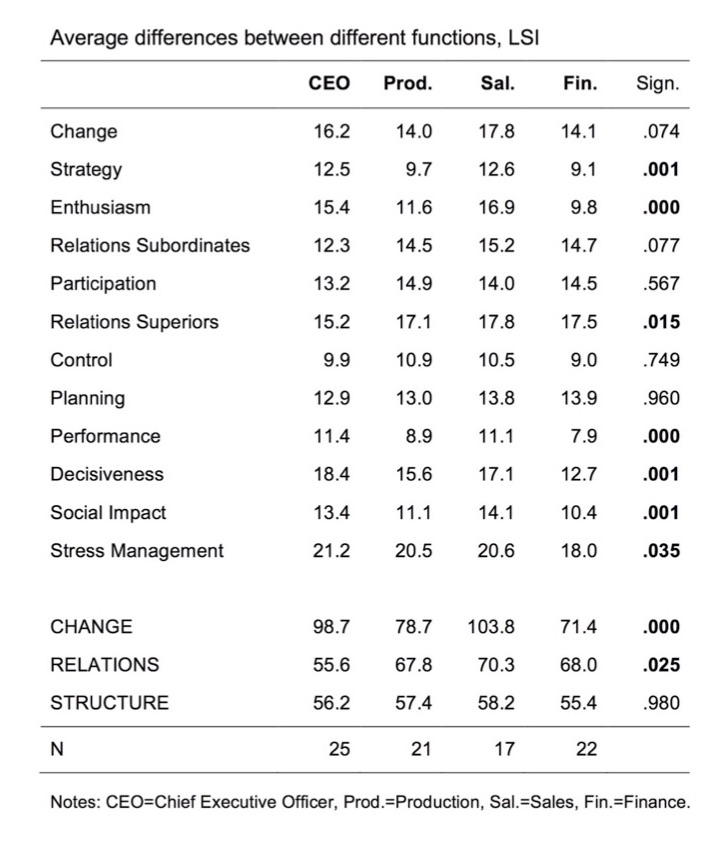
The research groups are quite small, so the results should be considered preliminary. That said, several significant differences in averages emerge. For the leadership styles (CHA, REL and STR), it is primarily in CHA: Changing where the differences are significant, but also the differences in REL: Relation-oriented are significant. Regarding the dimension STR: Structured, there are no significant differences.
In further analysis, the average value differences were examined in more detail. It appears that the Change dimension is higher among CEOs and sales managers, compared to managers of production and finance. On the other hand, CEOs and sales managers are not significantly different when it comes to the Change dimension, and, in addition, production and finance managers do not differ significantly.
Regarding the Relationship dimension, there is only one significant difference between the groups, and it is between sales managers and CEOs. Sales managers are significantly higher.
As can be seen in the table, the groups differ in the Additional Scales. In particular, managers in finance get low values on the scales. This points to the fact that managers in finance often show relatively lower motivation and confidence in managerial tasks.
Conclusions
As suggested earlier, the groups are small, and the conclusions should be seen as preliminary. Maybe there is especially much to do for leadership developers in the finance function. One may wonder if the low values can be explained by the fact that finance managers often have small management teams because they are in a staff function and leadership is not considered as important as for many other managerial roles. The employees are often well educated, relatively independent specialists.
Recruiters can note the importance of the Change dimension for CEOs, and also for sales managers. CEOs also combine Change with lower values on the dimension Relation-oriented. They describe themselves as more Independent (task-oriented and unsentimental/”tough”).

What leadership is required for restructuring?
The survey was conducted in a major Swedish company during a pronounced and extensive period of change. About 40 managers had to complete a modified requirement analysis twice. In the first requirement analysis, the managers stated how they felt about demands on their leadership style until the present. In the second requirement analysis, they stated how they felt that the demands on their leadership style would be from this point forward. A 10-degree scale was used for the assessments, in which the measurement scales’ dimensions corresponded to the LSI test (Leadership Style Inventory). (In the survey, it was the first version of the LSI test that was used. It differs in some ways from the LSI version II that is used today).
The result of the survey is shown below.
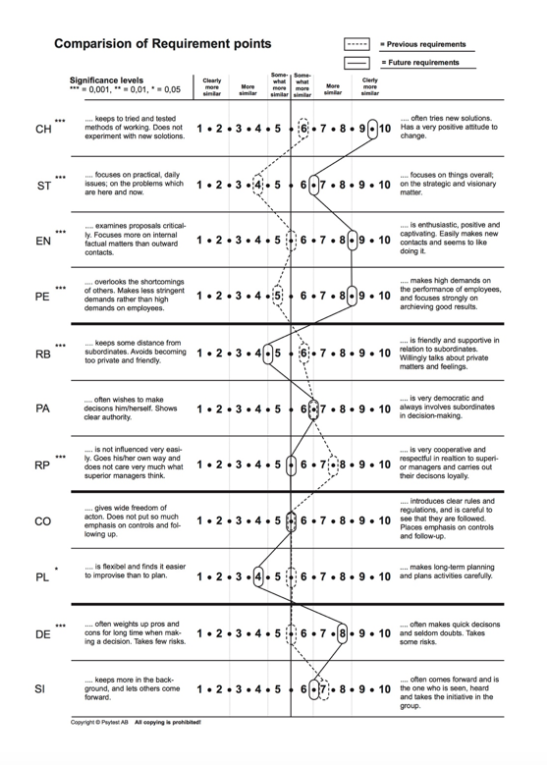
The dotted line reflects the average of the managers’ assessments of the demands set so far (i.e., previously set demands) in their leadership style, and the solid line reflects the average of the managers’ assessments of future demands on their leadership style. As the organization was in a very clear transition phase, it can be assumed that the differences between previous and future demands reflect the demands the managers felt they faced at conversion/change compared to the demands placed on them in a more calm, controlled period.
The results show that managers on all scales associated with Changing Leadership Style (ie, CH: Change, ST: Strategy, EN: Enthusiasm and PE: Performance) expect significantly higher requirements in the future.
Significant differences between past and future demands also reflect increased demands for DE: Decisiveness, lower demands for RB: Relations subordinates and RP: Relations superiors and lower demands for PL: Planning (the latter is weakly significant). This means that if it was previously good to nurture warm and conflict-free relationships with superiors, follow plans and take great care of the relationships with subordinates, and exercise great care in decision making, it will be good in the future to be more courageous and to dare to make uncomfortable decisions and spend less time on planning.
Conclusions
What recommendations can be made for the recruitment and training of managers based on these results? The results indicate that if managers are to be prepared to deal with profound changes, they need more of a changeable attitude (CH). They need to transcend the daily routines (ST) and motivate employees with enthusiasm and self-esteem (EN). They also need to set higher performance requirements (PE). These are all aspects of a Changing leadership style. In addition, the results show that managers feel a need to be “tougher”: to confront conflicts and show greater determination/courage. These are, in any case, behavioral areas that many executives feel need to be strengthened, and it may be wise to develop them in managers if you know that the demands to make radical changes will be great in the future.
In terms of recruitment, these results (and also others) show that the Change leadership style and that the sub-scales CH: Change and EN: Enthusiasm are assets when there is a high demand to drive changes. Even DE: Decisiveness can be an interesting scale to look at more closely.
During the autumn, Psytest AB will publish a number of survey results about leadership. The surveys are presented in more detail in a dissertation by Stefan Lindstam (see amazon.de, “The FSI Führungsstilinventar und das integrative Führungsmodell”, 2015). The dissertation is written in German, although it is based on Swedish surveys. In order to give readers easier access to these results, this article series consists of shortened and simplified presentations of selected survey results in English. The surveys are made by using the LSI Leadership Style Inventory Test. The underlying leadership style model is broad and general (compare the Big Five model within the personality field) and the conclusions are therefore generally relevant to people working in the field of management recruitment and leadership development.

Differences in leadership styles of top managers and first-line managers
During the autumn, Psytest will publish a number of survey results about leadership. The surveys are presented in more detail in a dissertation by Stefan Lindstam (see amazon.de, “The FSI Führungsstilinventar und das integrative Führungsmodell”, 2015). The dissertation is written in German, although it is based on Swedish surveys. In order to give readers easier access to these results, this article series consists of shortened and simplified presentations of selected survey results in English. The surveys are made by using the LSI Leadership Style Inventory Test. The underlying leadership style model is broad and general (compare the Big Five model within the personality field) and the conclusions are therefore generally relevant to people working in the field of management recruitment and leadership development.
The purpose of this analysis is to look at the differences in leadership style between managers at different levels, in this case, three levels: first-line managers (41 persons), mid-level managers (96 persons) and top-level managers (66 persons). First-line management consists of managers such as department managers and sales managers. In the public sector, corresponding titles are area manager and section manager. Middle-level management consists of, for example, functional managers, factory managers, site managers, and production managers. In the public sector, corresponding titles are department manager and unit manager. Top-level management consists of CEOs and other directors. In the public sector, corresponding titles are municipal chief executive and director of administration.
A brief description of the LSI test
The LSI test provides scores on three broad leadership style dimensions: Preserving vs. Changing, Independent vs. Relation-oriented and Flexible vs. Structured. These dimensions each represent a floating scale between two extremes and each extreme is considered a special leadership style, such as a Preserving Leadership Style or a Changing Leadership Style.
Each leadership style dimension has three sub-scales (so-called “style scales”). The sub-scales for the leadership style dimension Preserving–Changing are called CH: Change, ST: Strategy and EN: Enthusiasm. The leadership style dimension Independent–Relation-oriented has the sub-scales RB: Relations Subordinates, PA: Participation and RP: Relations Superiors. The leadership style dimension Flexible – Structured has the sub-scales CO: Control, PL: Planning and PE: Performance (PE: Performance is also linked to a Changing Leadership Style).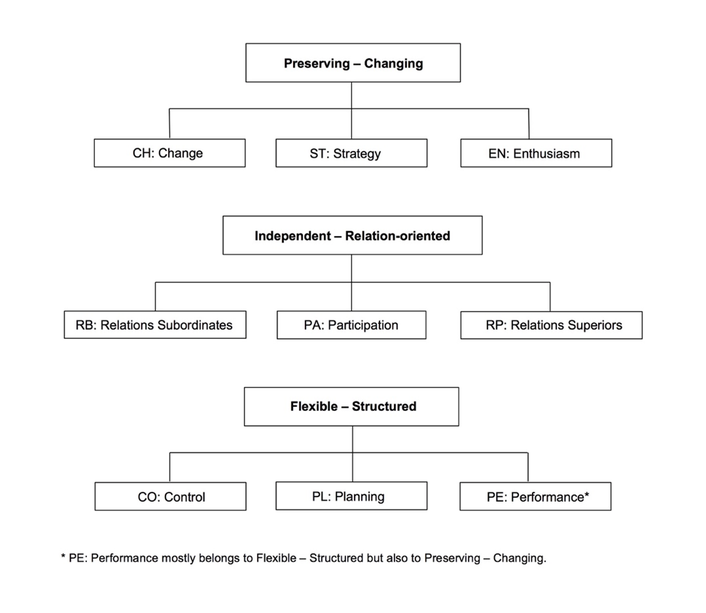 In addition to the scales specified so far, the test also provides scores on three so-called “additional scales.” These are BE: Decisiveness, SI: Social Impact and SM: Stress Management. Together, these three scales more generally refer to the motivation and self-confidence of leadership.
In addition to the scales specified so far, the test also provides scores on three so-called “additional scales.” These are BE: Decisiveness, SI: Social Impact and SM: Stress Management. Together, these three scales more generally refer to the motivation and self-confidence of leadership.
Result
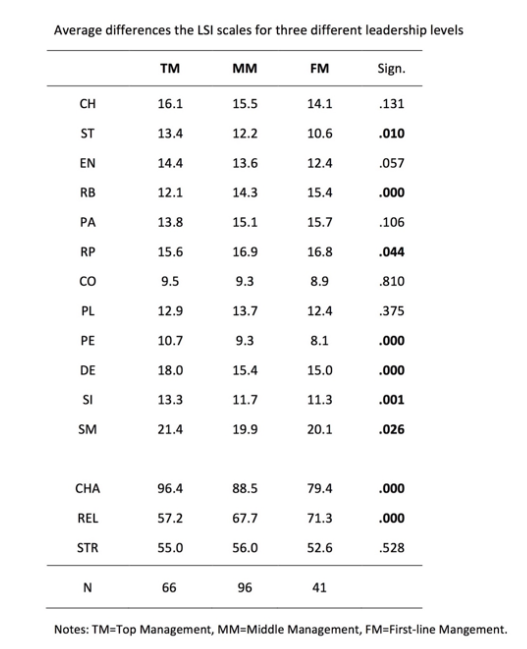
Regarding the three broad leadership style dimensions, the three groups differ because the higher the managerial level, the higher the average of the Change Dimension (CHA). The difference is highly significant and has also been shown previously in an independent survey. The results thus show that the higher the managerial level, the more change-oriented the leadership. This result was also expected since a top manager’s areas of responsibility are broader and usually require looking at a business from a cross-functional perspective. They also have a longer planning horizon and contribute to strategic discussions in the management team. First-line managers usually have a more operational focus.
The additional scales also distinguish between the groups in such a way that top managers get significantly higher values than mid-level managers and first-line managers, as was also expected, as motivation and confidence in leadership, on average, can be expected to grow with increasing management responsibility.
Less obvious is another difference between the managerial levels, which is also significant in two separate studies. It turns out that the higher the managerial level, the lower the Relationship dimension. That is, top managers describe themselves as having a more Independent leadership style. The top managers thus describe a leadership style that is characterized by a greater (professional) distance to employees, a stronger focus on the facts and a more independent and determined attitude about various issues. In first-line managers, however, one finds more focus on the relationships with both superiors and employees, helping and supporting employees who have problems, and establishing warm relationships.
If we look more closely at the Style and Additional Scales, top managers score significantly lower on RB: Relations Subordinates and RP: Relations Superiors. They score significantly higher on PE: Performance, DE: Decisiveness, SI: Social Impact, ST: Strategy and SM: Stress Management. For RP and SM, the tendency is not continuous. In a previous survey with only the categories “top managers” and “first-line managers,” the same scales significantly differentiated these groups. In addition, strategic thinking increases at higher management levels, so a more demanding (PE: Performance) and “tougher” leadership style (low RB and RP) seems to emerge.
One might conclude that top managers need different “social skills” than first-line managers. While first-line managers demonstrate leadership that is similar to common definitions of employee-oriented leadership (the manager gives attention, consideration and support to employees), it seems that top managers exhibit behaviors such as standing up for their opinions, thinking independently, adapting less to others and focusing more on the task and making demands on others. Thus, a “tougher” relationship management is shown, with emphasis on independence, setting requirements, and conflict-tolerance.
It can also be noted that there are no significant differences among the three groups in the Structural dimension (seen more in detail, it applies to the most central sub-scales CO: Control and PL: Planning).
Conclusions about recruitment and development of managers
The results suggest that while a more classical employee-oriented leadership can be developed in first-line managers, those who take further steps upward need to be prepared to keep others responsible for defined outcomes and to develop and defend their own ideas and opinions. In addition (of course), they need training to take a broader, more strategic perspective, to learn analysis models, to gather relevant information, to think more creatively, to develop more change-orientation, etc.
In terms of recruitment, this survey shows that top managers tend to be in the Changing and Independent direction (at least they do not usually get very high scores on the Relationship dimension) as well as on the Additional Scales. However, there is some influence from a manager’s function, which is listed in the section “Differences in Leadership Style for Different Functions.” The next article will first deal with leadership by restructuring.
Dissertation on LSI
 You can order Stefan Lindstam’s dissertation “Das FSI Führungsstilinventar und Das integrative Führungsmodell” (The LSI Leadership Style Inventory and the Integrative Leadership Model) by amazon.de.
You can order Stefan Lindstam’s dissertation “Das FSI Führungsstilinventar und Das integrative Führungsmodell” (The LSI Leadership Style Inventory and the Integrative Leadership Model) by amazon.de.